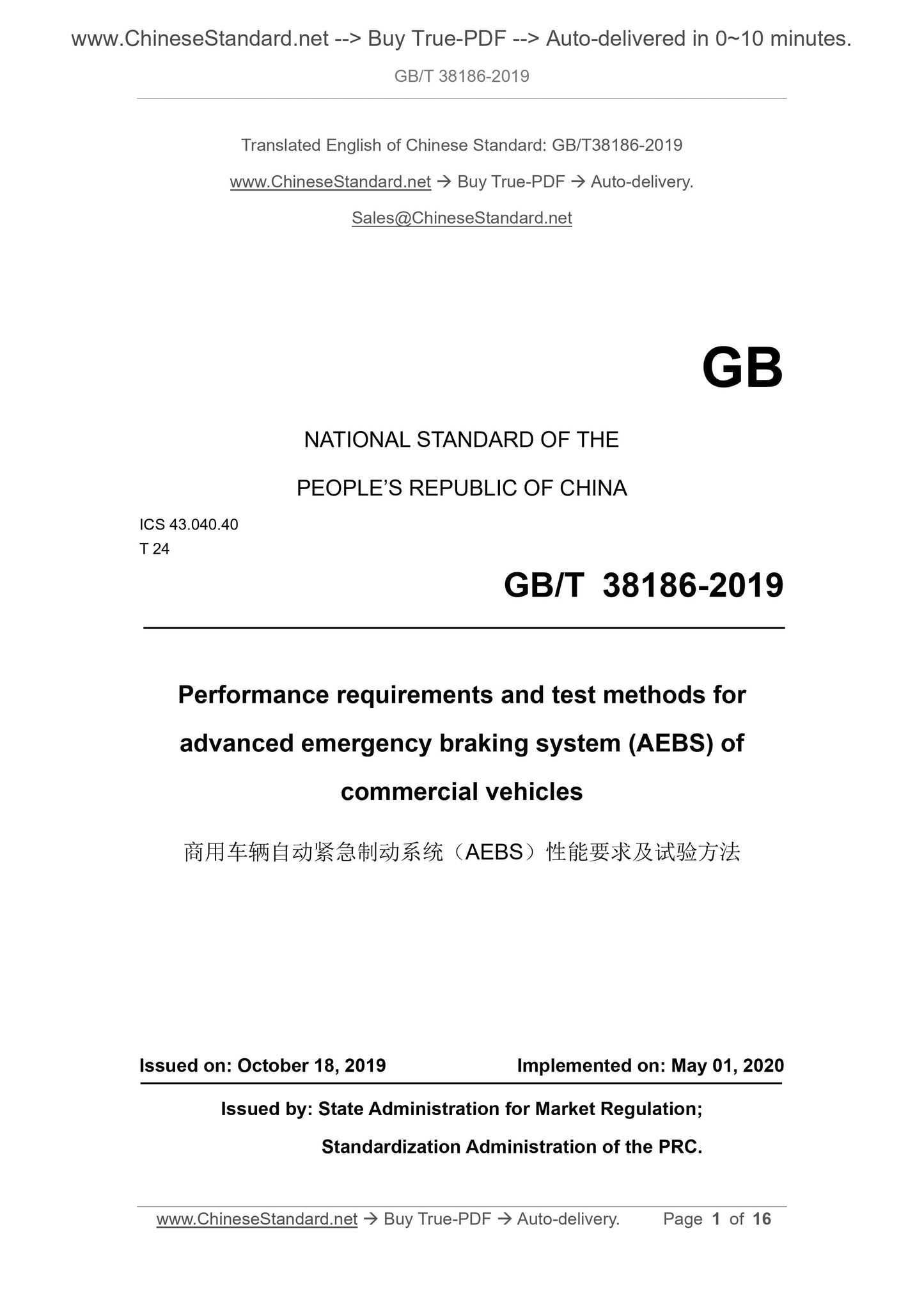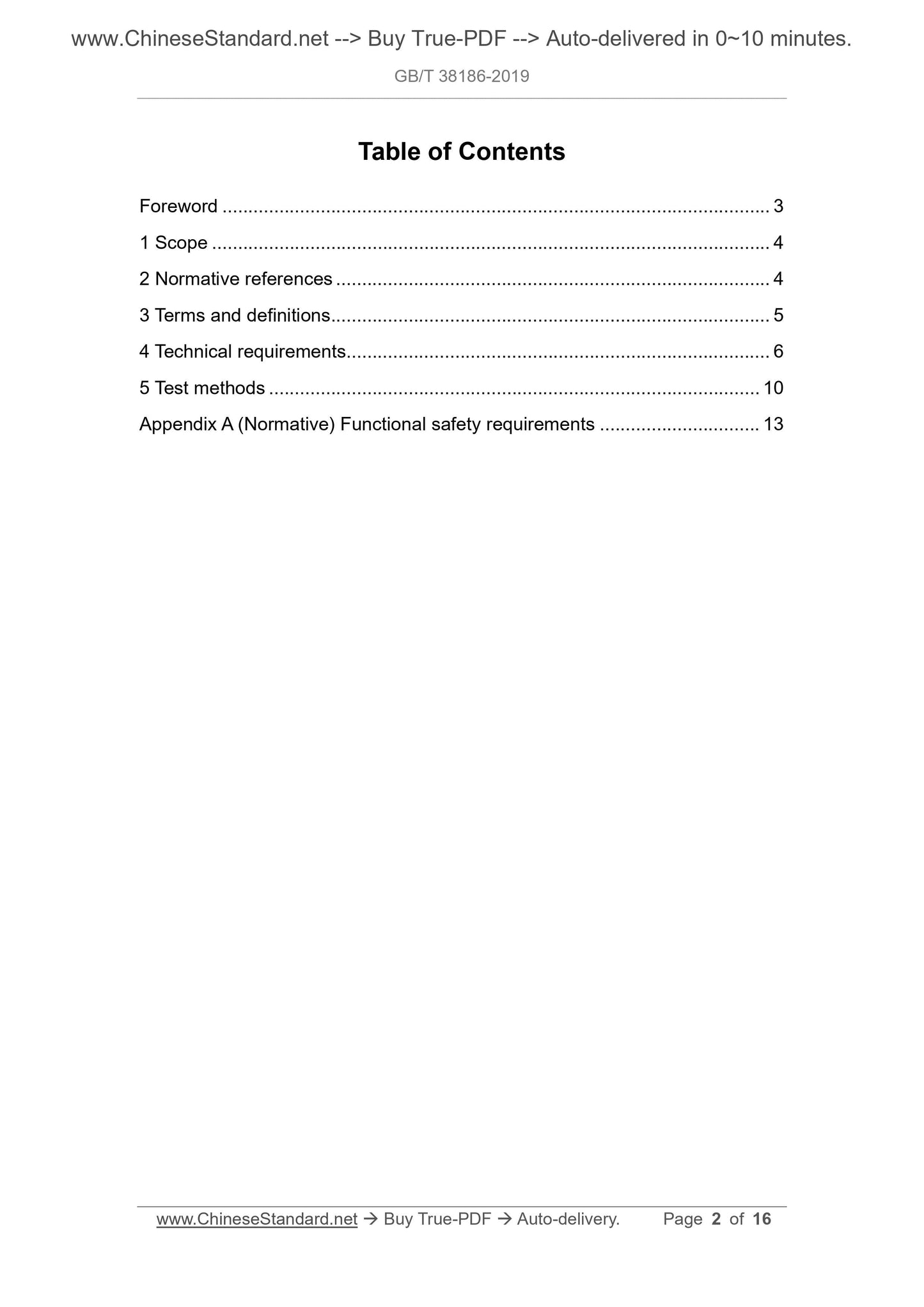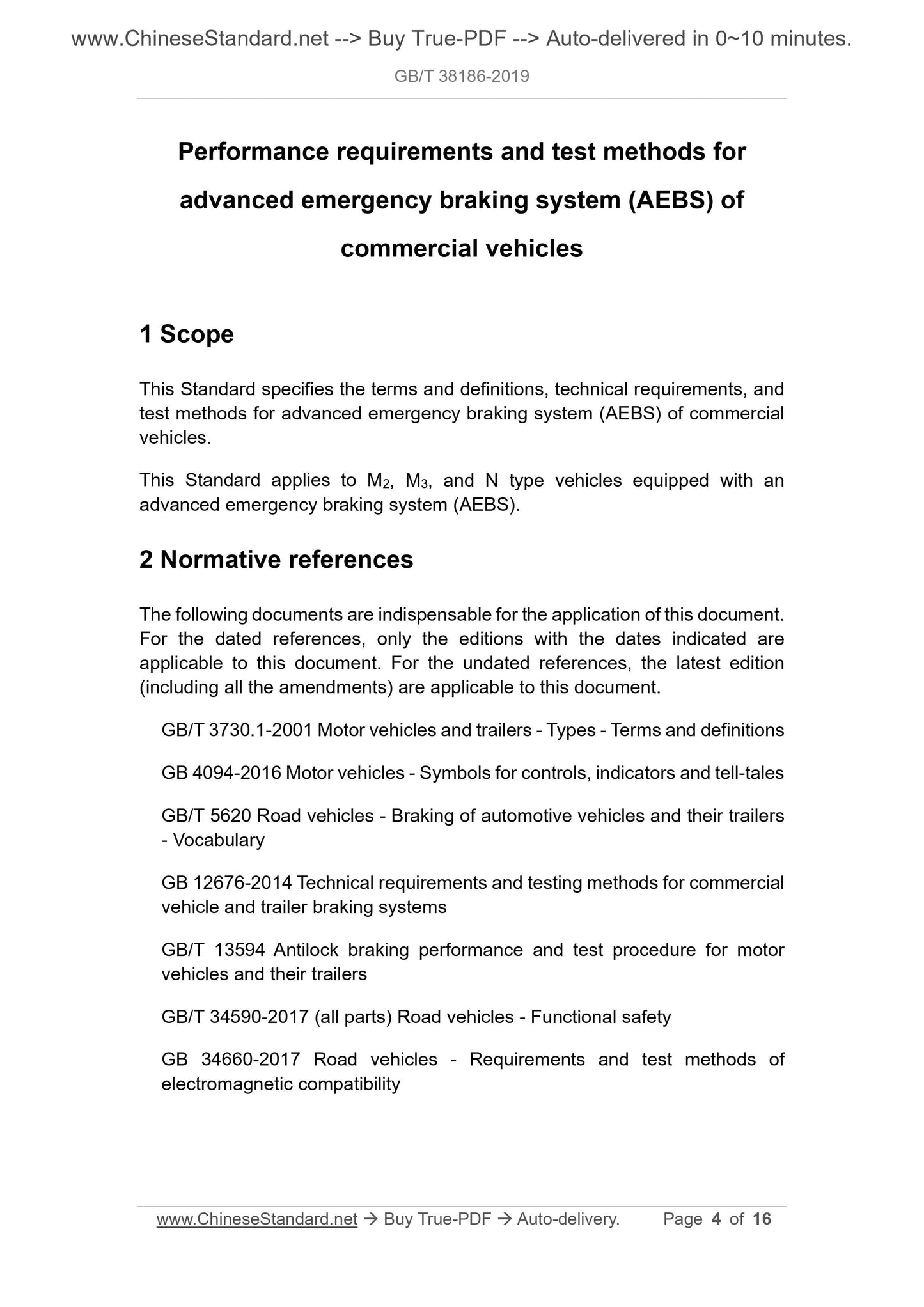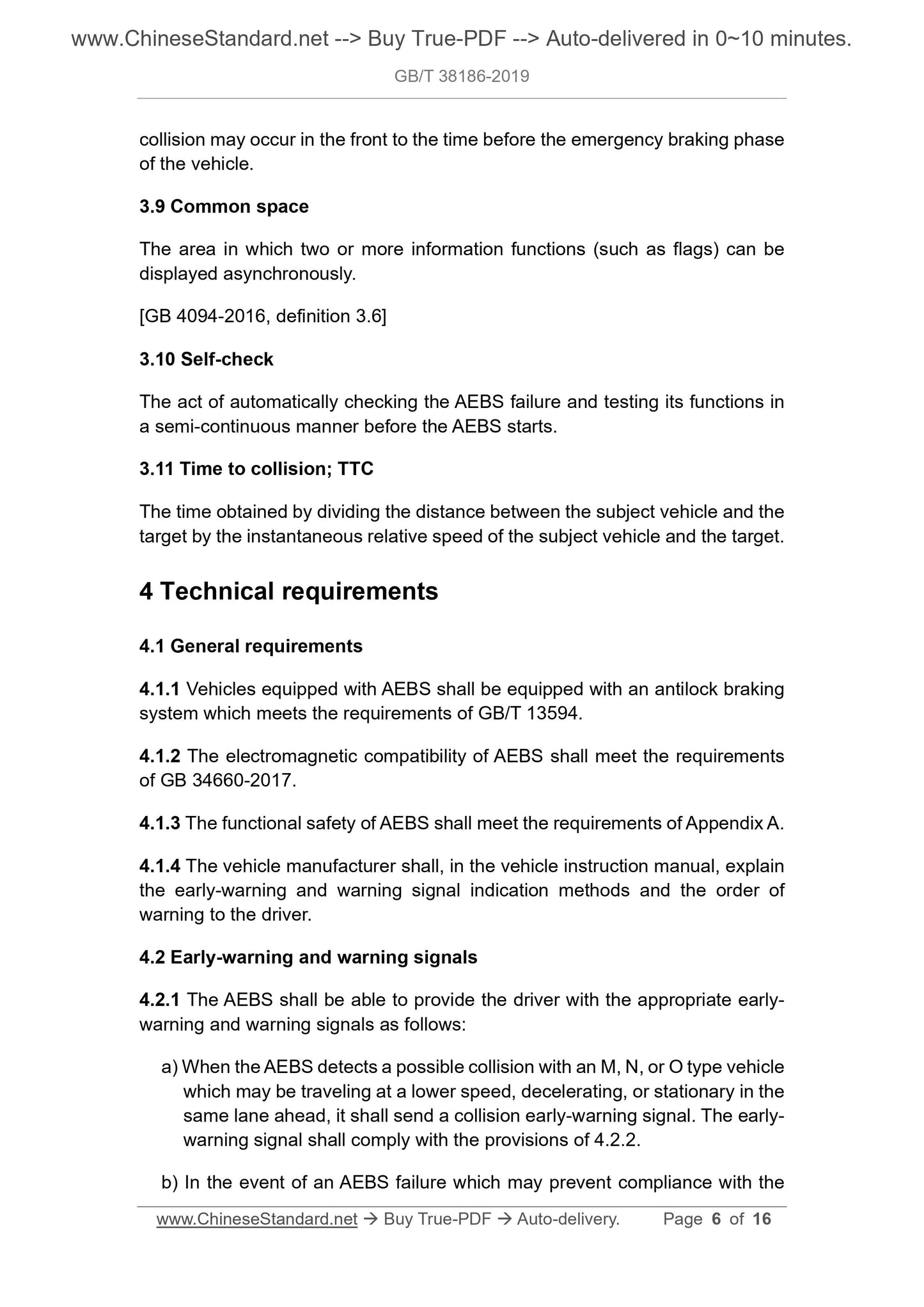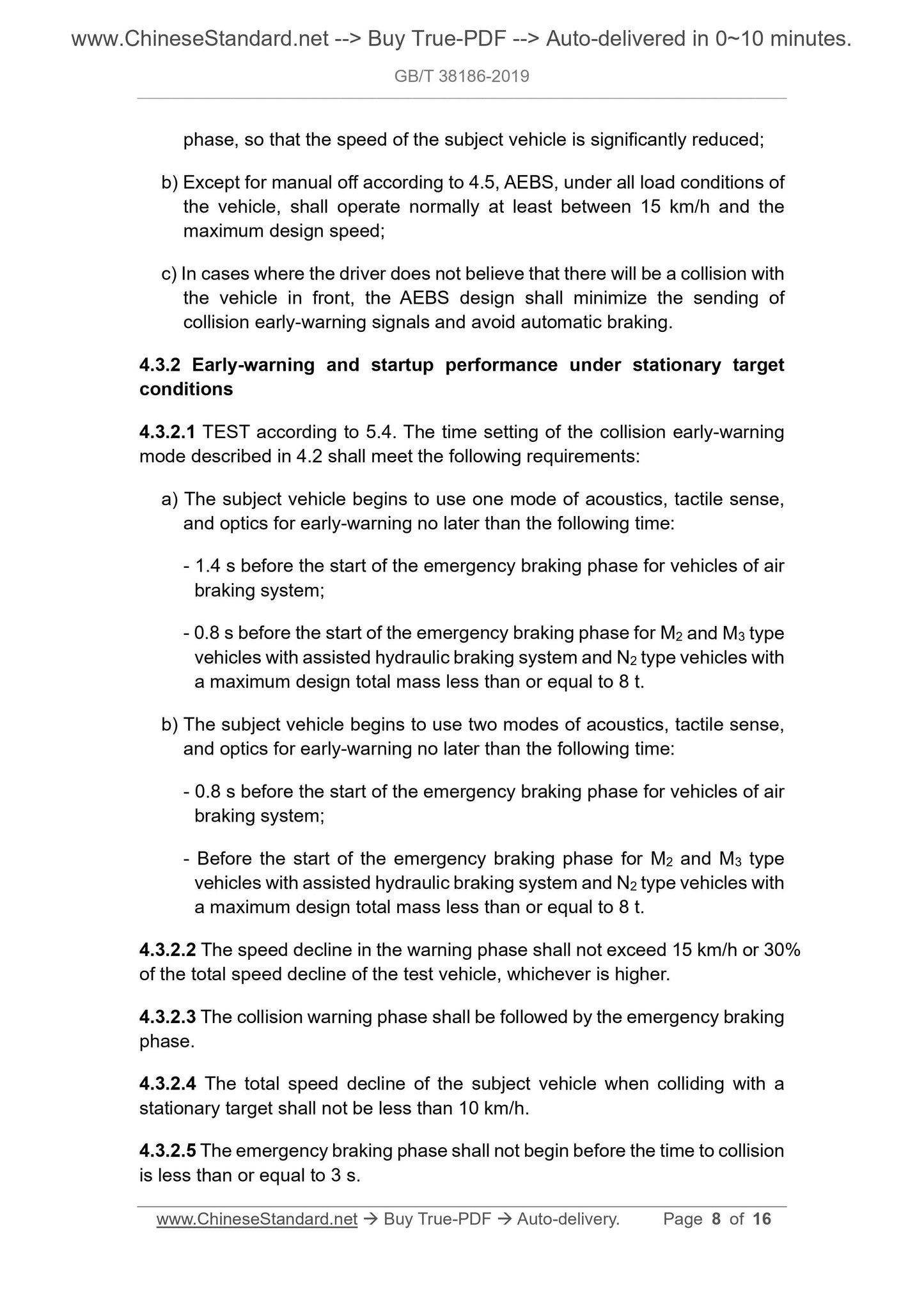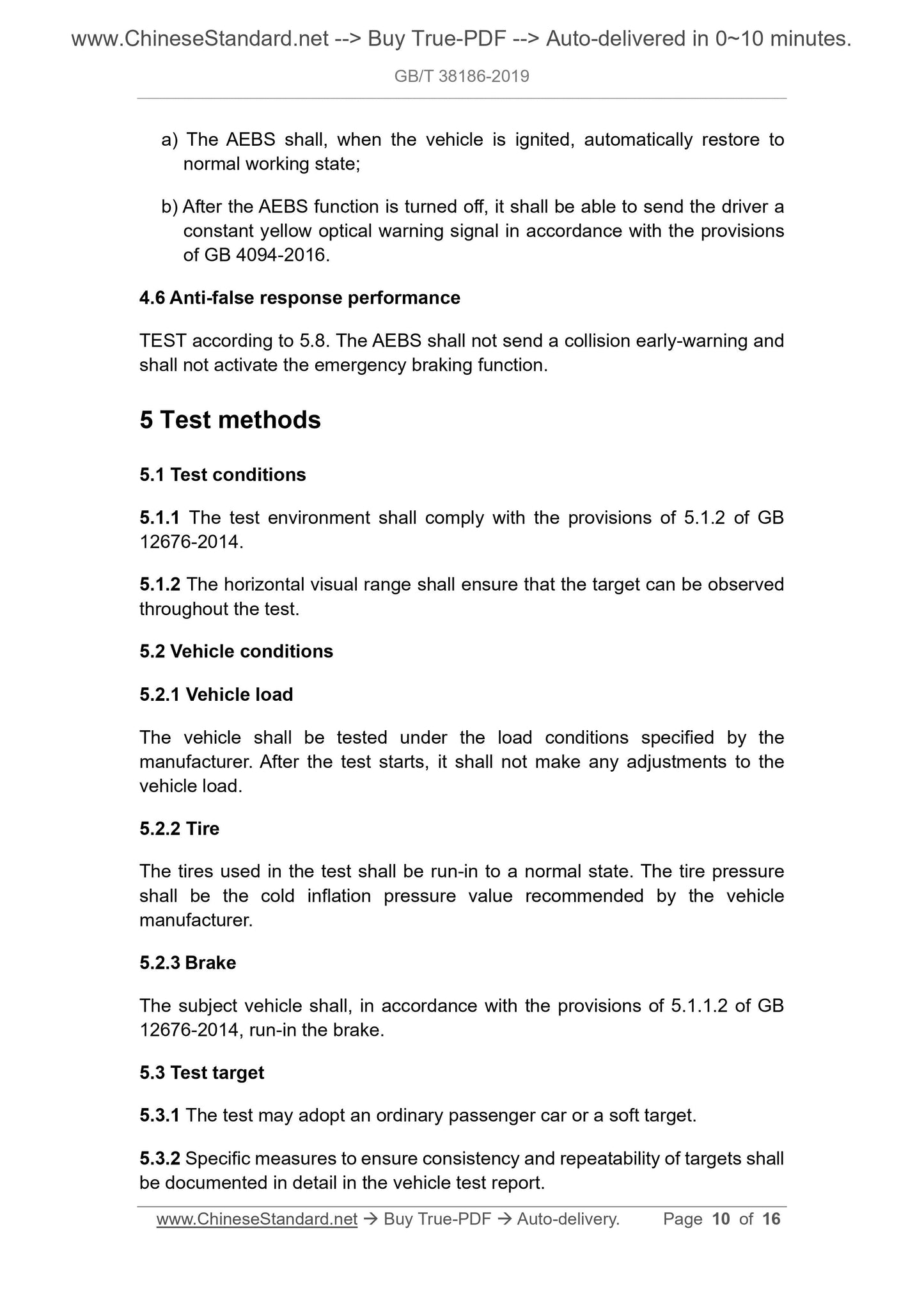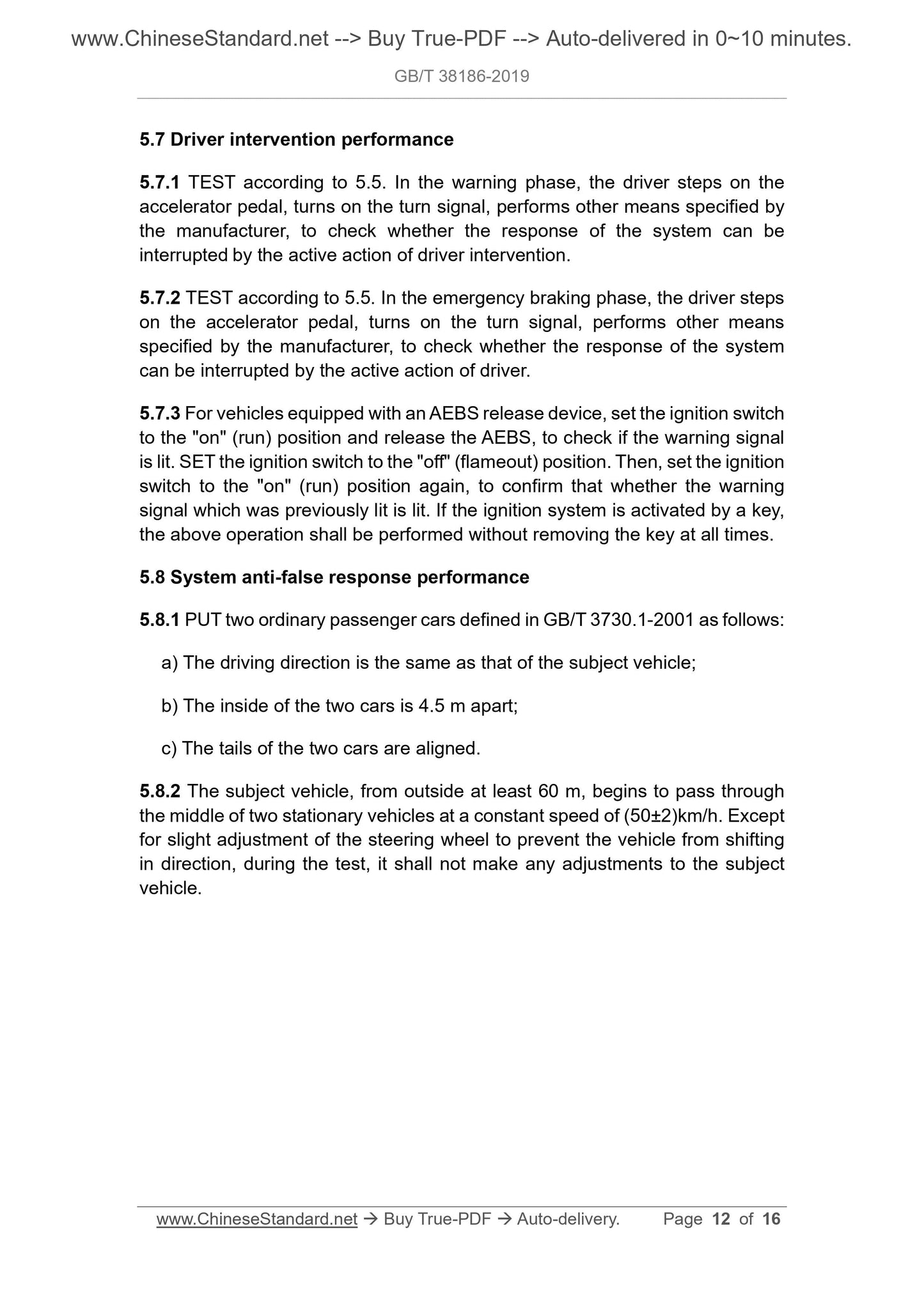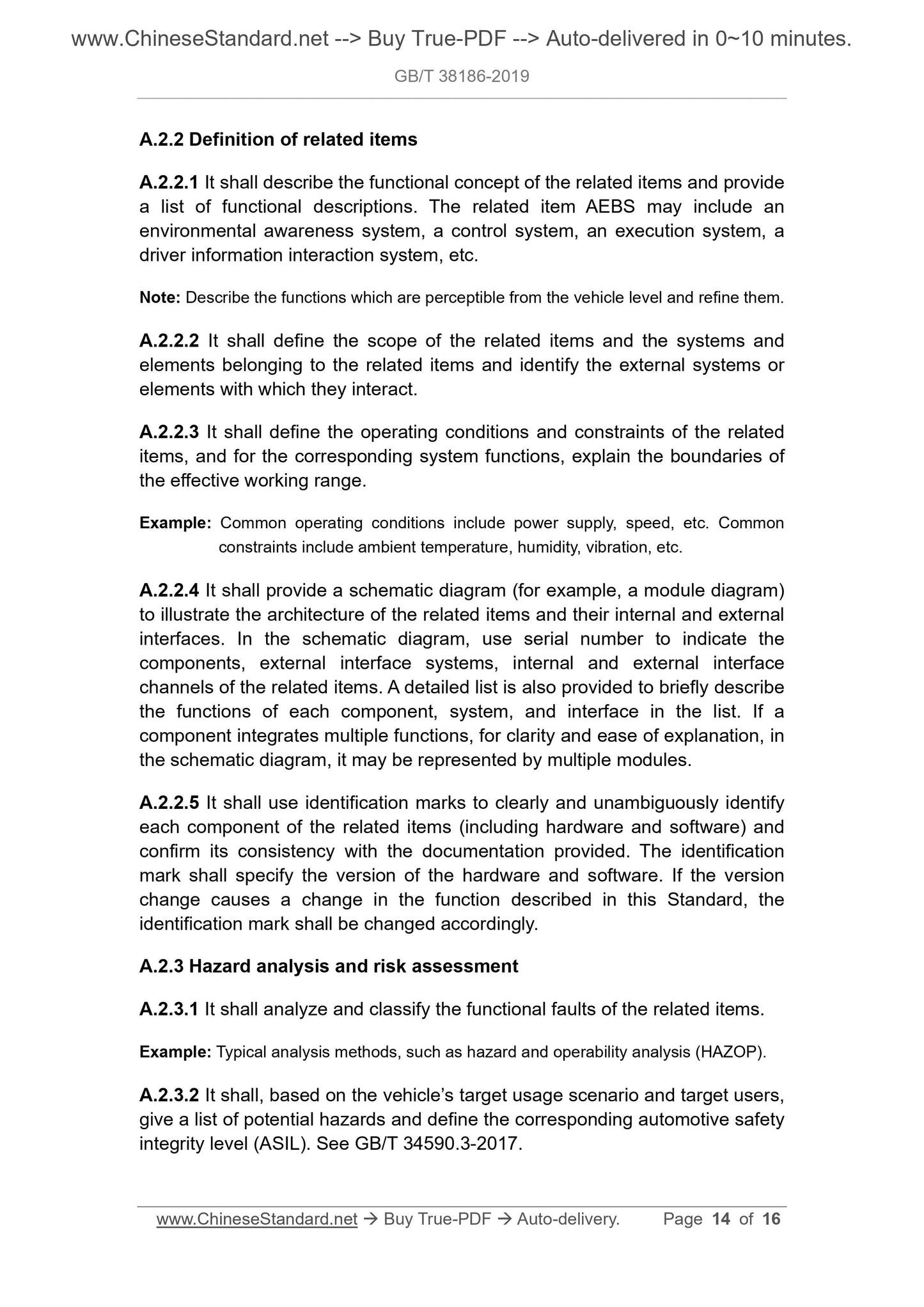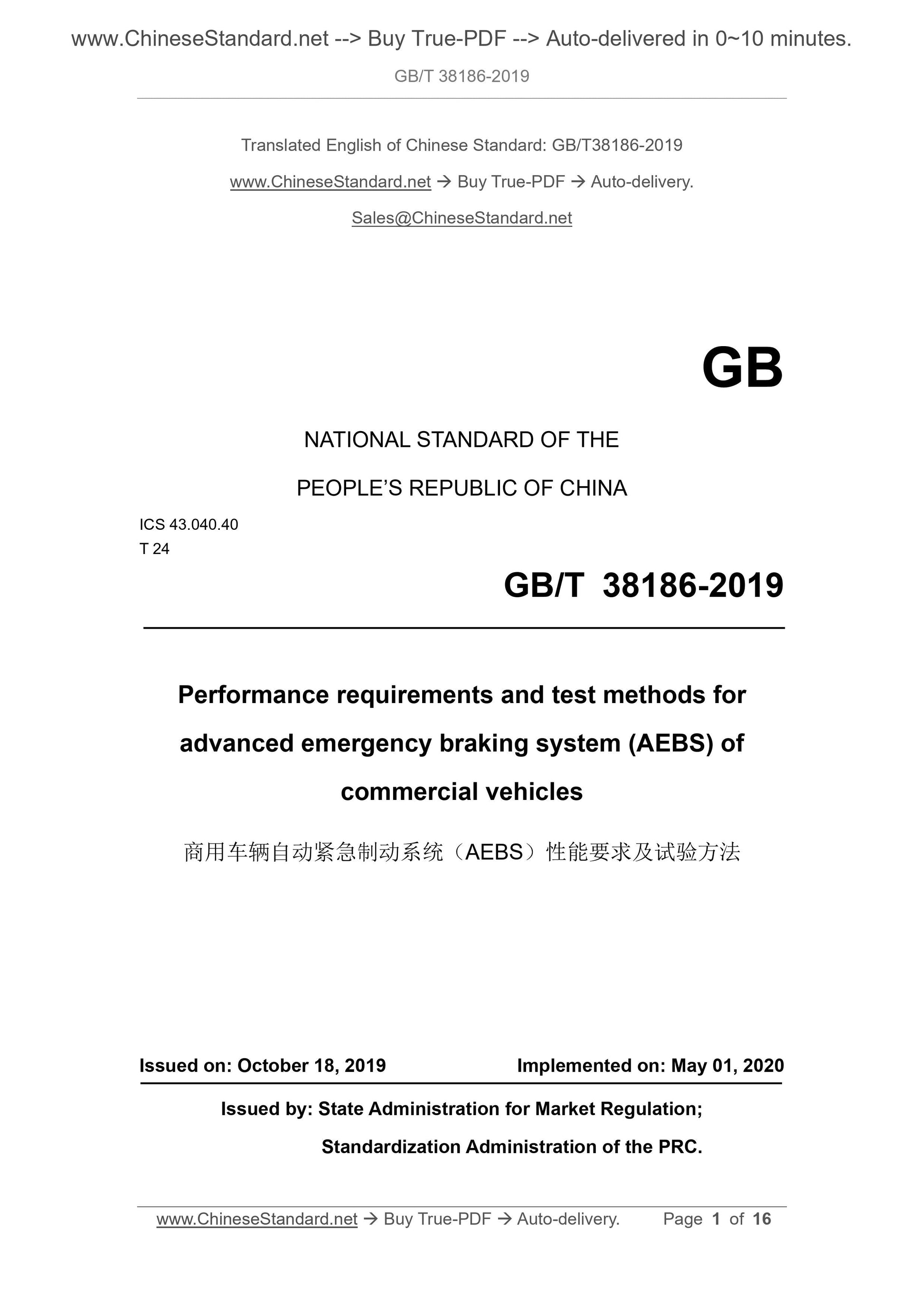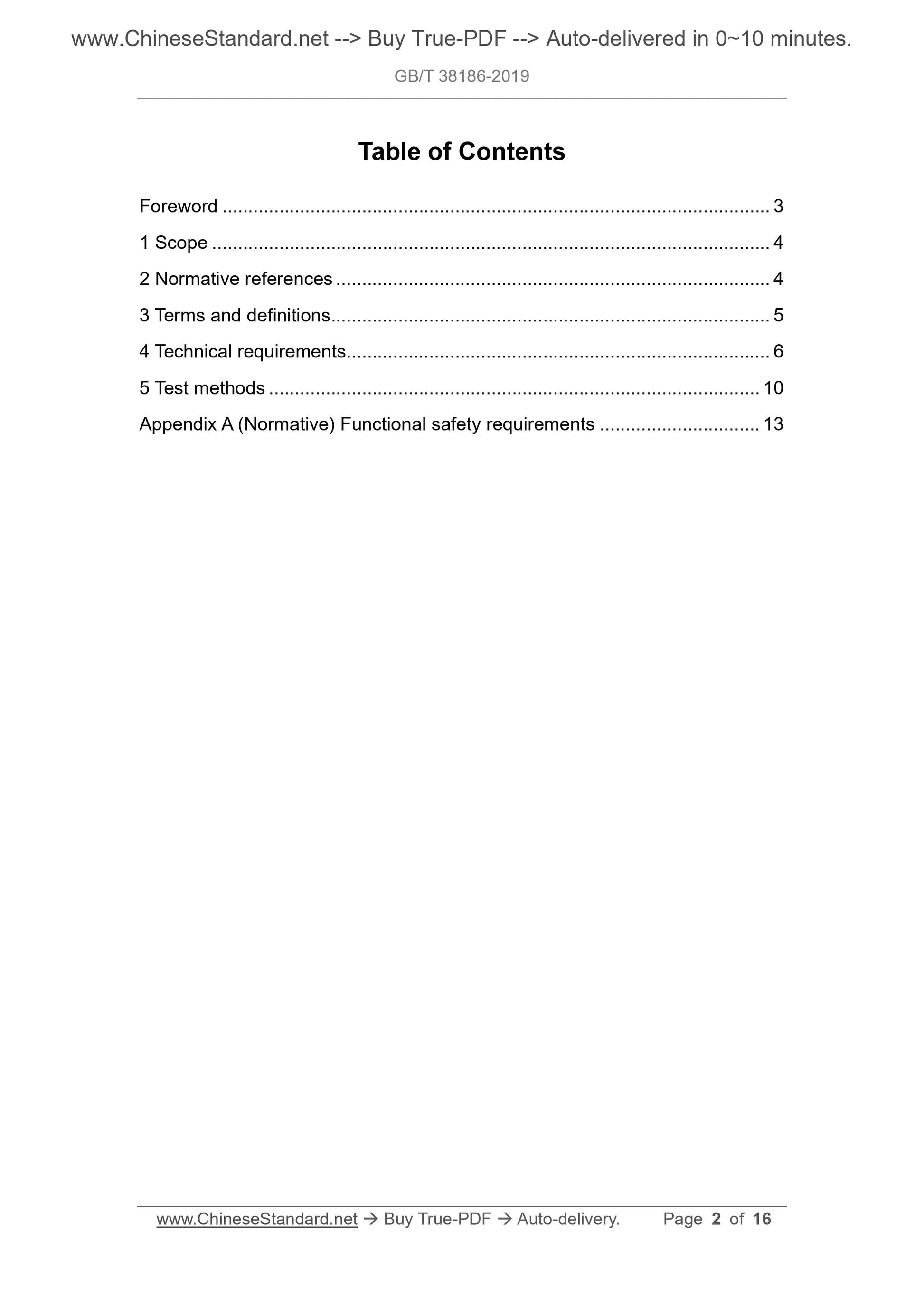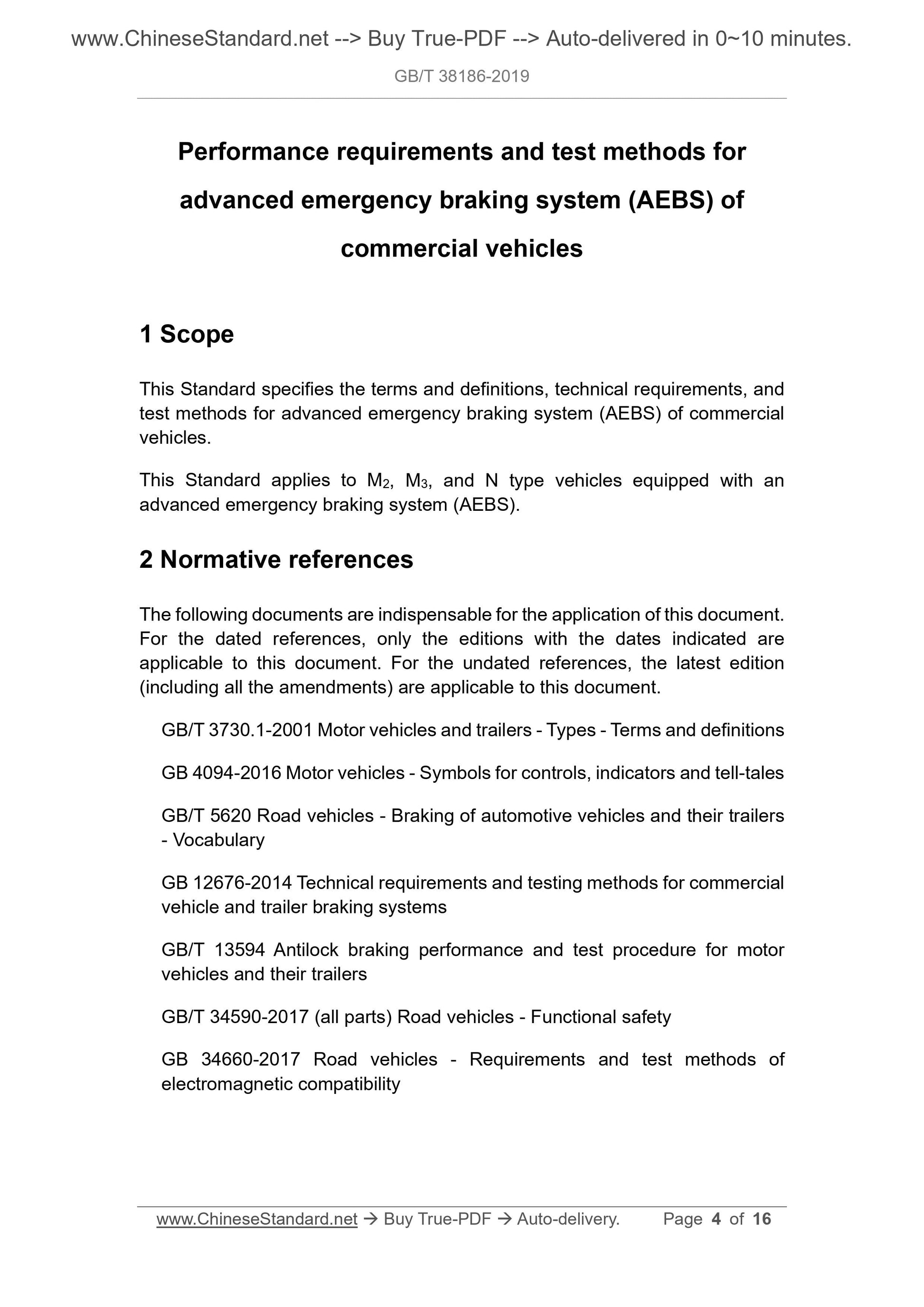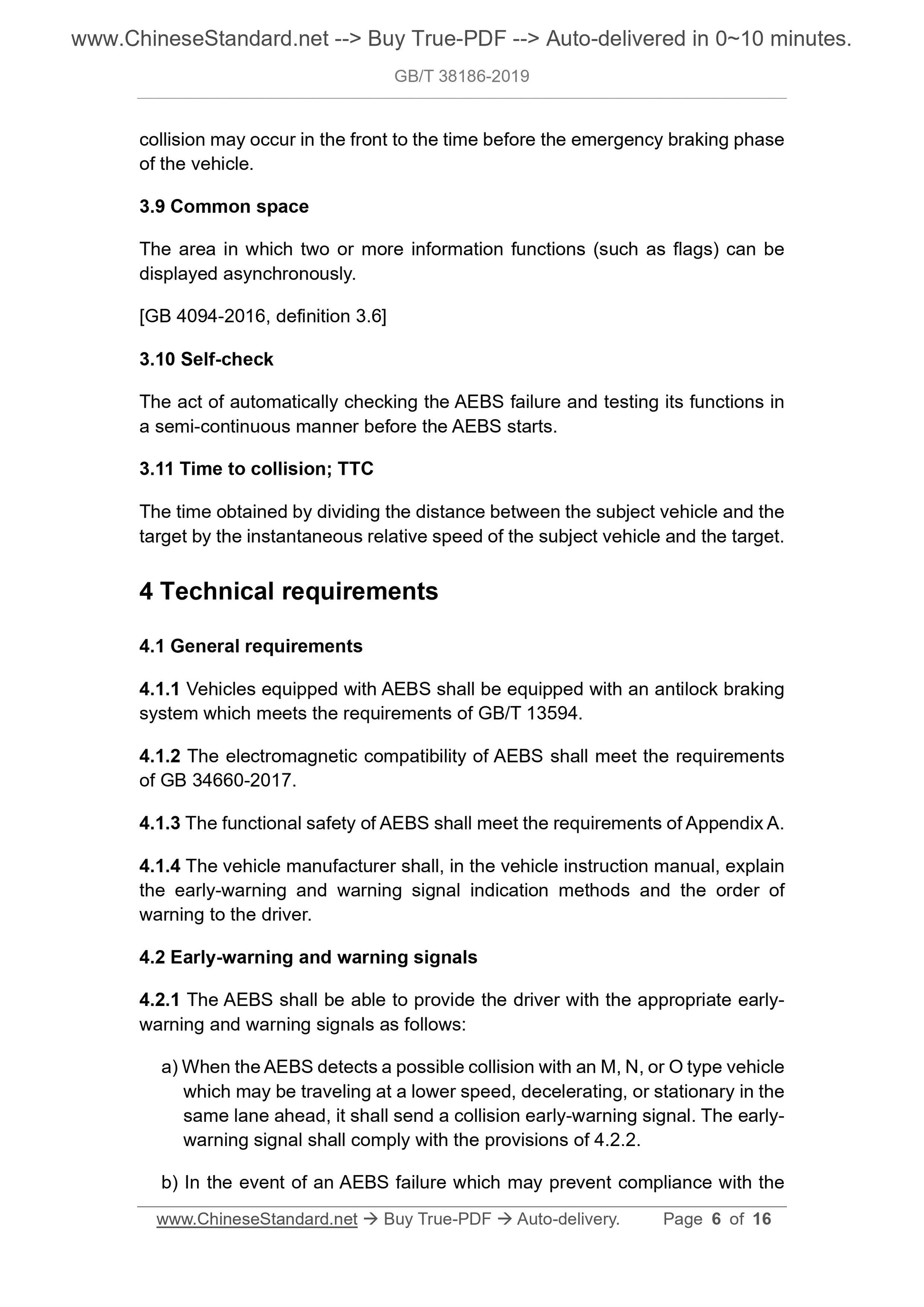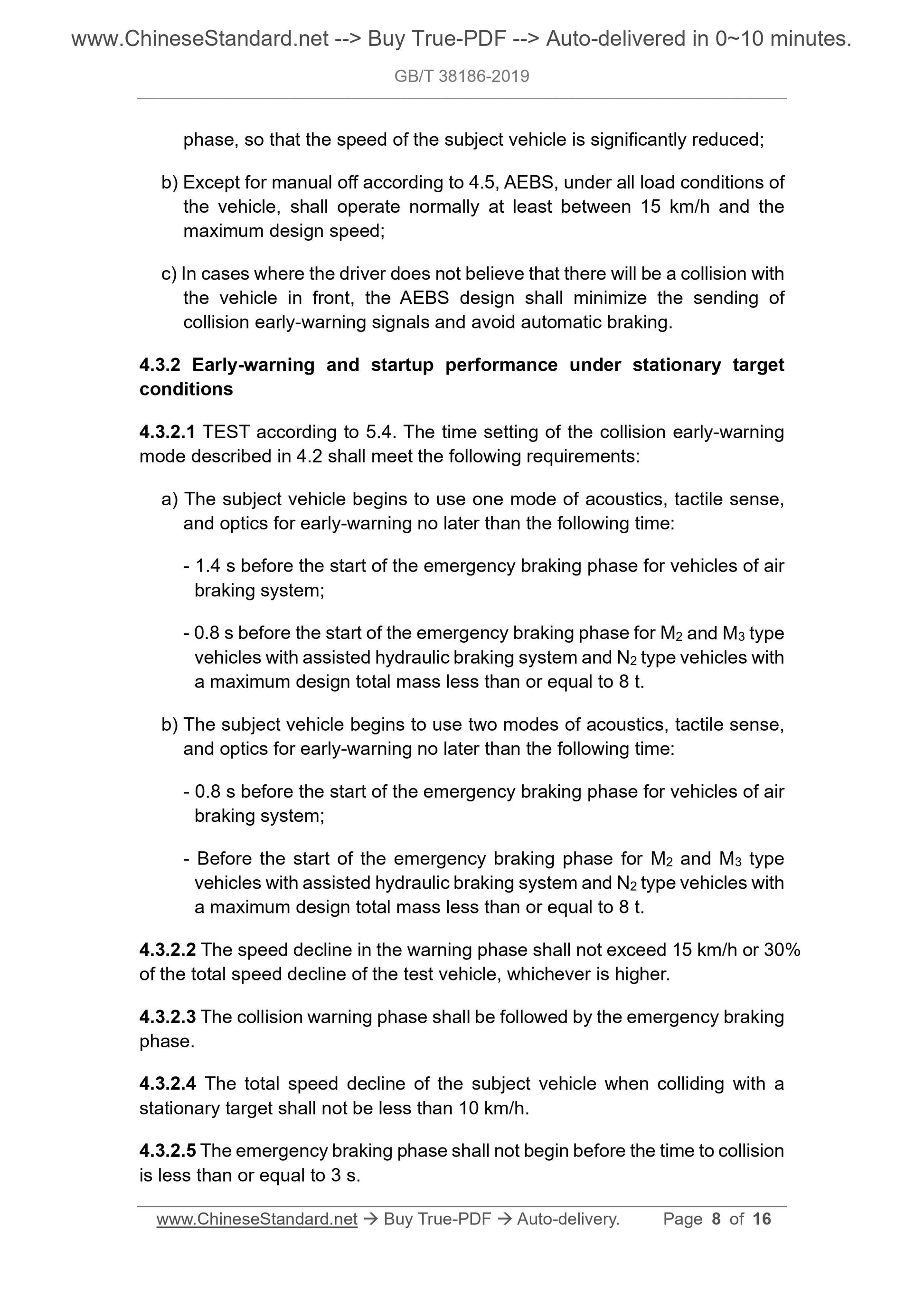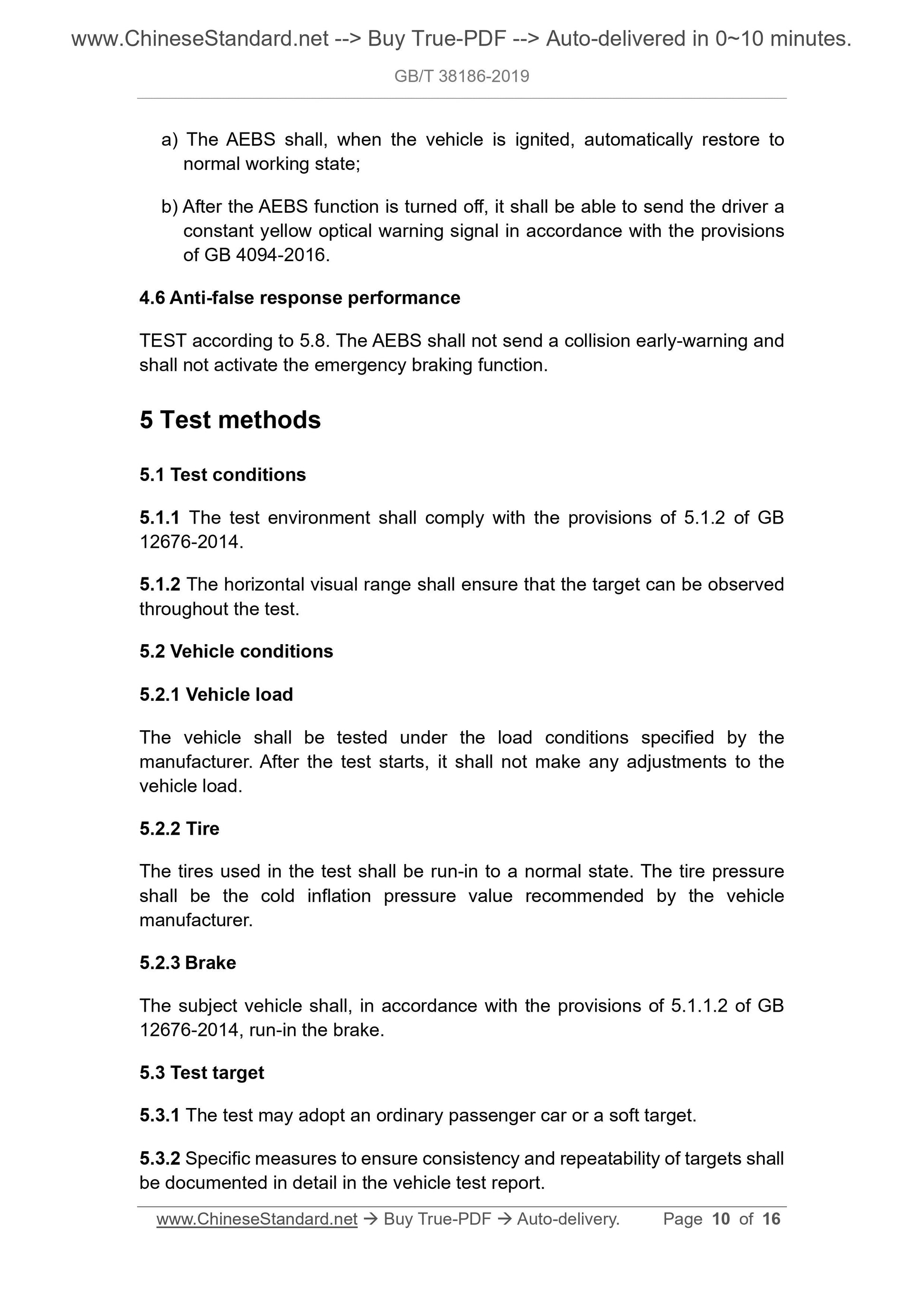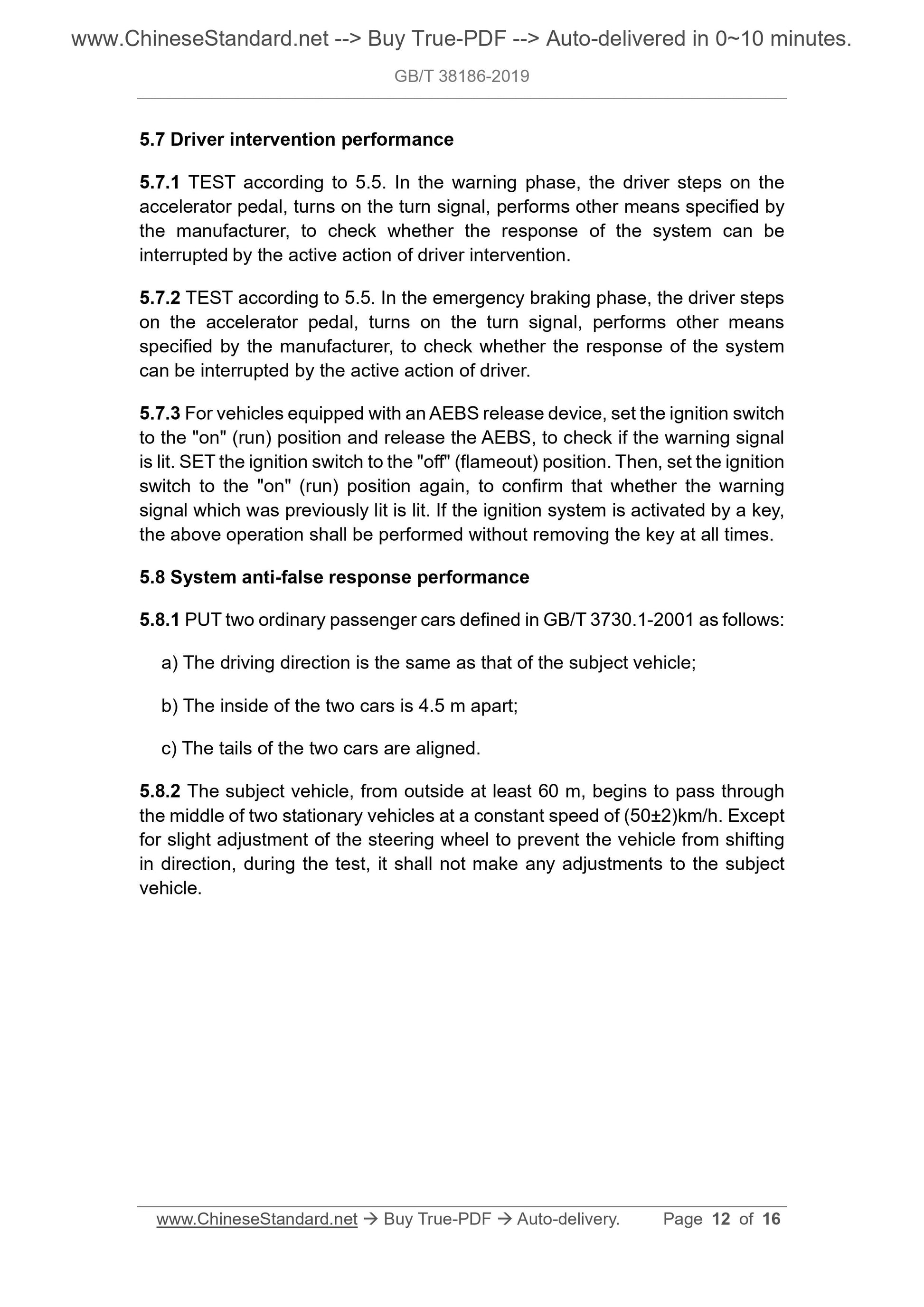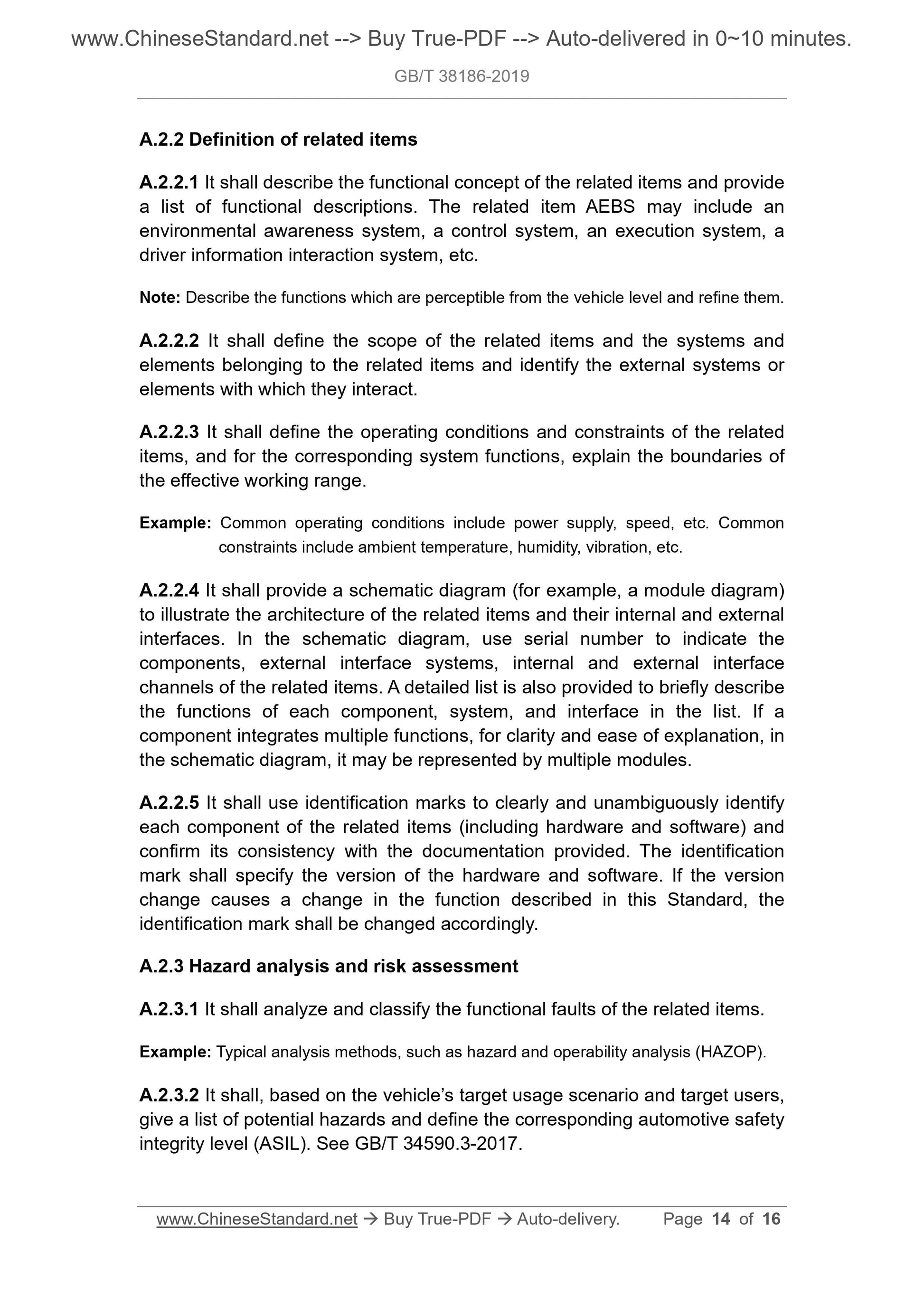1
/
of
8
www.ChineseStandard.us -- Field Test Asia Pte. Ltd.
GB/T 38186-2019 English PDF (GB/T38186-2019)
GB/T 38186-2019 English PDF (GB/T38186-2019)
Regular price
$125.00
Regular price
Sale price
$125.00
Unit price
/
per
Shipping calculated at checkout.
Couldn't load pickup availability
GB/T 38186-2019: Performance requirements and test methods for advanced emergency braking system (AEBS) of commercial vehicles
Delivery: 9 seconds. Download (and Email) true-PDF + Invoice.Get Quotation: Click GB/T 38186-2019 (Self-service in 1-minute)
Newer / historical versions: GB/T 38186-2019
Preview True-PDF
Scope
This Standard specifies the terms and definitions, technical requirements, andtest methods for advanced emergency braking system (AEBS) of commercial
vehicles.
This Standard applies to M2, M3, and N type vehicles equipped with an
advanced emergency braking system (AEBS).
Basic Data
| Standard ID | GB/T 38186-2019 (GB/T38186-2019) |
| Description (Translated English) | Performance requirements and test methods for advanced emergency braking system (AEBS) of commercial vehicles |
| Sector / Industry | National Standard (Recommended) |
| Classification of Chinese Standard | T24 |
| Classification of International Standard | 43.040.40 |
| Word Count Estimation | 10,123 |
| Date of Issue | 2019-10-18 |
| Date of Implementation | 2020-05-01 |
| Issuing agency(ies) | State Administration for Market Regulation, China National Standardization Administration |
Share
